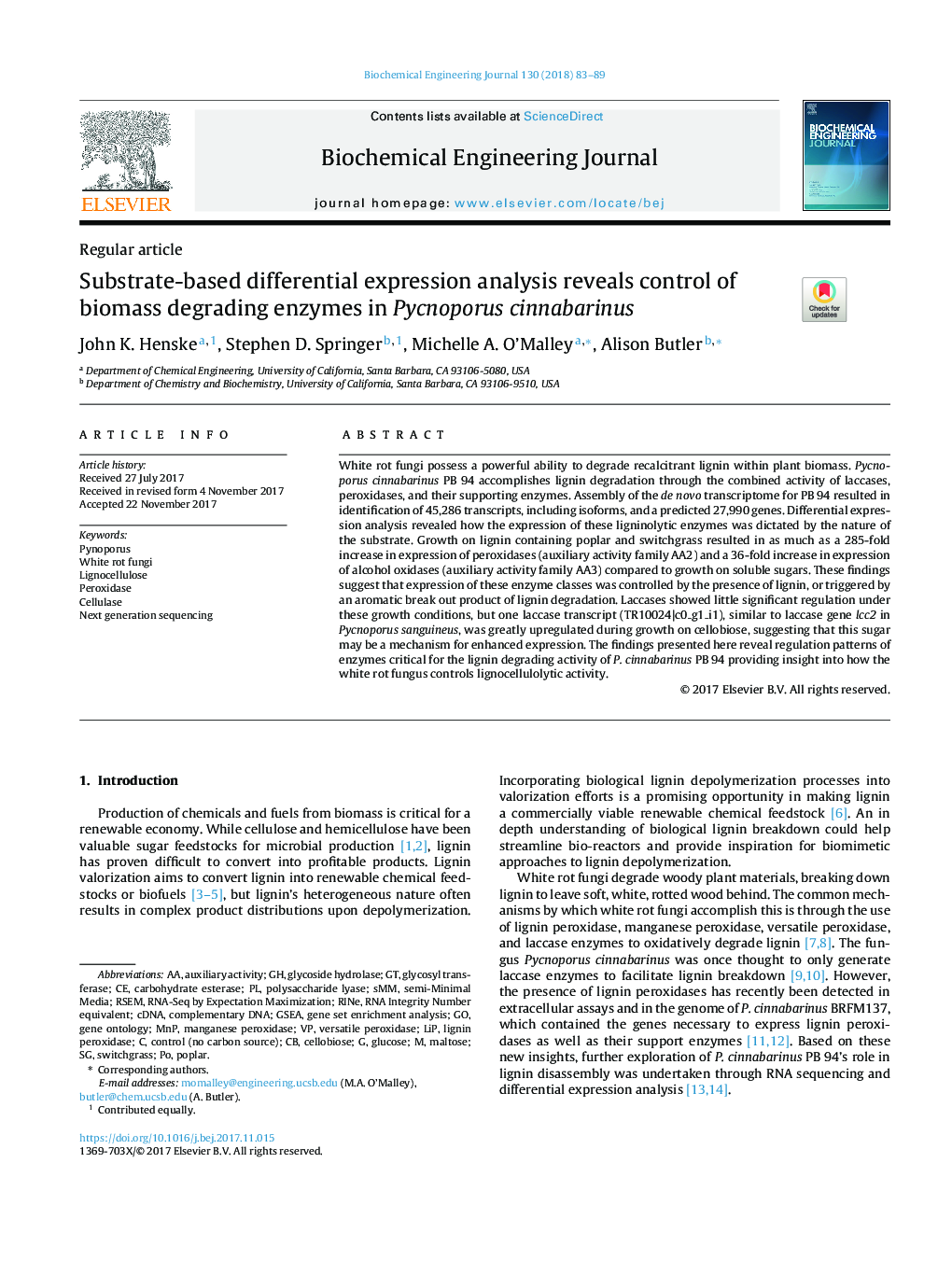| Article ID | Journal | Published Year | Pages | File Type |
|---|---|---|---|---|
| 6482296 | Biochemical Engineering Journal | 2018 | 7 Pages |
Abstract
White rot fungi possess a powerful ability to degrade recalcitrant lignin within plant biomass. Pycnoporus cinnabarinus PB 94 accomplishes lignin degradation through the combined activity of laccases, peroxidases, and their supporting enzymes. Assembly of the de novo transcriptome for PB 94 resulted in identification of 45,286 transcripts, including isoforms, and a predicted 27,990 genes. Differential expression analysis revealed how the expression of these ligninolytic enzymes was dictated by the nature of the substrate. Growth on lignin containing poplar and switchgrass resulted in as much as a 285-fold increase in expression of peroxidases (auxiliary activity family AA2) and a 36-fold increase in expression of alcohol oxidases (auxiliary activity family AA3) compared to growth on soluble sugars. These findings suggest that expression of these enzyme classes was controlled by the presence of lignin, or triggered by an aromatic break out product of lignin degradation. Laccases showed little significant regulation under these growth conditions, but one laccase transcript (TR10024|c0_g1_i1), similar to laccase gene lcc2 in Pycnoporus sanguineus, was greatly upregulated during growth on cellobiose, suggesting that this sugar may be a mechanism for enhanced expression. The findings presented here reveal regulation patterns of enzymes critical for the lignin degrading activity of P. cinnabarinus PB 94 providing insight into how the white rot fungus controls lignocellulolytic activity.
Keywords
RNA-Seq by Expectation MaximizationMNPSwitchgrassSMMRSEMLIPGSEAcDNAComplementary DNAGene Set Enrichment AnalysisNext generation sequencingCellobioseCellulasePoplarWhite rot fungilignin peroxidaseMaltoseLignocelluloseGene ontologyPeroxidasemanganese peroxidaseVersatile peroxidasepolysaccharide lyasecarbohydrate esteraseGlucoseglycoside hydrolaseglycosyl transferase
Related Topics
Physical Sciences and Engineering
Chemical Engineering
Bioengineering
Authors
John K. Henske, Stephen D. Springer, Michelle A. O'Malley, Alison Butler,
